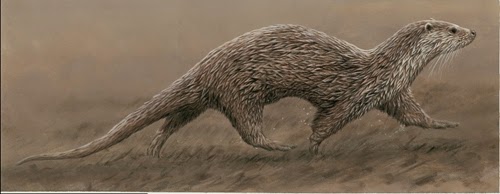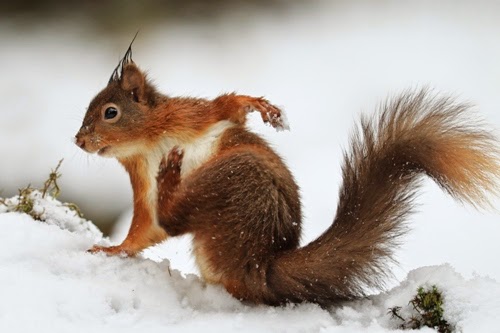Recently I visited one of the country’s most important
wetland reserves run by the RSPB at Leighton Moss.
I arrived shortly after dawn and watched the sun come up.
Most of water was partly-frozen, but it still reflected the dawn light
perfectly.
The first two birds I saw were two hen harriers, silhouetted
against the dawn sky as they hunted low over the marshes.
As I opened the shutters of the nearest hide I could hear
the calls of teal, wigeon, mallard and grey Canada geese. I couldn’t see them,
but sound travels far in the still cold air.
I realised there must be a channel of unfrozen water behind
the reed bed. Looking at the map I found a way across the causeway and began to
head off in the direction of the noise.
I soon found the channel teaming with ducks. There were
shoveler, gargeney, teal, mallard, grebes and swans – all sharing the same
small space.
I headed to the nearest hide, but frustratingly, the ducks
were still too far away.
Then I heard a fellow birdwatcher beside me say ‘I’ve got the
otter’. I looked across to the other side of the lake with my binoculars and
could just make out an otter in the distance. It was on the edge of the reed
bed and was running out on to the ice.
I decided to walk to a hide closer. I set off along the
causeway, where a sign informed me I had 460 metres to go.
I set off along the path with just the reed bed in view.
There was plenty to hold my attention as I walked: wrens, robins, reed buntings;
I knew there would be bearded tits too, although these remained elusive. I spotted this too and couldn't decide what it was. Marsh or willow tit?
I spotted fresh red deer slots on the path in front. I
looked through the reeds and spotted their body shapes through the criss-cross
of reeds. They raised their heads and looked in my direction but there was no
time to stop.
At last I entered the hide. It was still early and I was the
only one in. I opened the hatch, but I couldn't see the otter.
In fact I couldn't see much at all. But the longer I sat
there, the more emerged. I spotted a snipe, on the edge of the frozen lake and
then another one crouched in the grass, perfectly camouflaged.
And then the marsh
harrier was back, hunting over the reed beds.
Then a quivering reed caught my eye. I looked through my binoculars
down at its roots and there was nose of a vole tugging at it. Suddenly the vole
felled the reed and began tugging it away.
I watched amused as the tiny vole felled reed after tall reed.
A couple of hours passed in this way and I was wondering whether
I would see the otter again. By this time the hide was filling up with other
birdwatchers – there were now more eyes to look. Then someone from the far end
said ‘Otter on the ice!’
By the time I got to the other end of the hide the otter was
heading back into the reeds. I waited at that end of the hide, which had a
different view over the frozen water.
There were some small patches that weren't frozen and here
there were more snipe. I could pick out five. They were probing their long
beaks in to the mud to feed on invertebrates.
Then the otter was back on the ice. It hesitated for a short
while. There was great excitement in the hide.
It ran 60 metres across open ice to another reed bed. It was
great to see its lolloping gait as it ran.
Focussing my binoculars I noticed there were in fact two
otters, a mother and cub. They were hunting under the ice.
As they came out of the water, their bodies lifted pieces of
ice. The cub started to play with a bit of ice that had broken.
It was using it like an ice hockey puck; flopping onto its
belly and pushing the shard of ice along with its nose and front paws. It was
great to see them acting so playfully in such cold weather.
The otters looked so clear against the icy backdrop that I
couldn't wait to get home and begin sorting through some suitable compositions
for a painting. Below is an otter I painted some time ago and right at the top an acrylic and pencil drawing of one running.

















